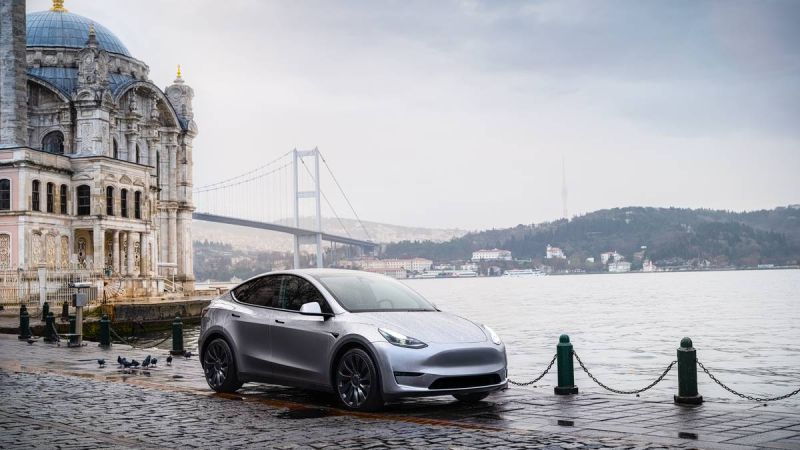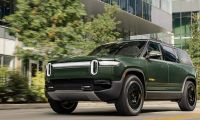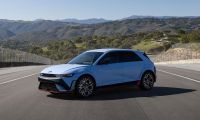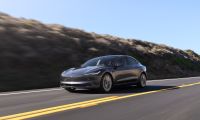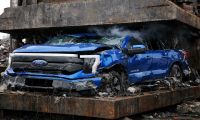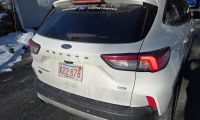You think you’ve seen it all… turbochargers, supercomputers, launch control, regenerative braking, even cars that can outthink a racing driver in the rain. And then a vehicle comes along that doesn’t just impress, it rewires the way you think about the very act of driving.
That’s what happened when one user stepped into a Tesla Model Y and activated Full Self-Driving for 48 hours. They came in expecting a circus of near-misses, social media bloopers, and hands-on-heart panic attacks. What they got instead was a front-row seat to the future of mobility, silent, unflinching, and astonishingly competent.
"I am honestly speechless. My entire world has been rocked. The Model Y is a great car, but I had no idea FSD was this good. I sat there nervously with my hands hovering over the steering wheel, waiting for it to jerk into a cyclist, veer into oncoming traffic, or make one of those random meme mistakes you see in YouTube videos, or read about from Twitter critics.
But it never happened. For three hours straight, it negotiated its way through city streets, highways, and narrow roads in the most shockingly natural and peaceful way possible. It was so good that I actually found myself kind of bored with the experience.
I never considered myself a Tesla hater, but after years of hearing "FSD will be solved this year", I have to admit that my skepticism was at an all-time high. But after this, I genuinely have to reorganize my decision-making with regards to future car purchases because I don't see how it's possible to buy anything else. My entire perception of automobiles and the driving experience is fundamentally different now."
- AliveRat, r/TeslaLounge
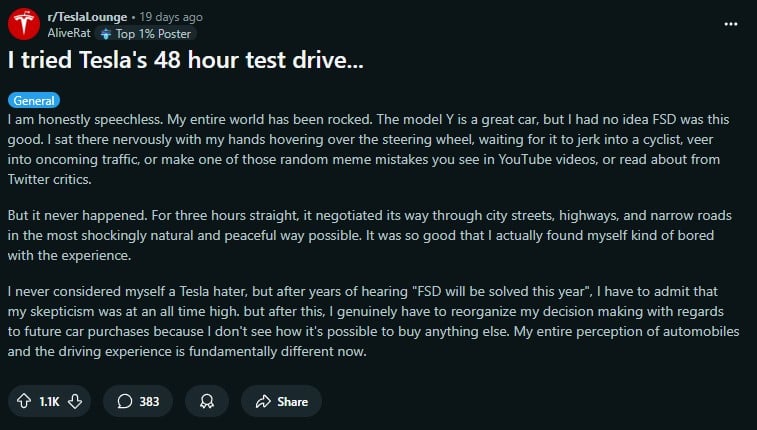
That quote came from a Reddit user, no affiliation, no incentive, just raw honesty after spending two days with a machine that’s learning in real time. And what stood out wasn't just the functionality, it was the confidence of the system. You go in expecting an “uh-oh” moment, but it never arrives. The car doesn’t second-guess. It just... drives. And it does so with a level of composure that, frankly, puts a few licensed humans to shame.
Tesla Full Self-Driving Update: Level 2 Autopilot, Dojo AI Supercomputer & 48-Hour Demo
- Tesla’s Autopilot and FSD (Full Self‑Driving) operate at SAE Level 2, meaning drivers must stay alert and supervised. Tesla’s “Unsupervised” robotaxi service differs due to heavy monitoring and geofencing
- Teslas collect real‑world driving data from millions of vehicles and feeds it into Dojo, Tesla’s in‑house AI supercomputer. This data-intensive model trains its neural networks to continuously improve safety and performance.
- Tesla’s 48‑hour self-driving demo allows select customers to experience FSD on highways, local roads, and parking, showcasing its real-world capability while reinforcing the need for active driver oversight (pilot participants report geofenced trials and constant supervision).
- Even with promises of “complete” autonomy, critics caution Tesla isn’t there yet. Studies show FSD can misjudge traffic, brake late, or misinterpret signals, and Tesla’s choice to depend primarily on cameras (rather than LiDAR) sparks debate.
The game changer, for many, was the recent removal of the steering wheel "nag", the persistent reminders to keep your hands on the wheel even if the car was clearly handling itself.
“Tesla finally getting rid of the steering wheel nag was the game-changing moment for me.”
Wrote user Jorge_14-64Kw. That update flipped the switch from “demo mode” to actual usability.
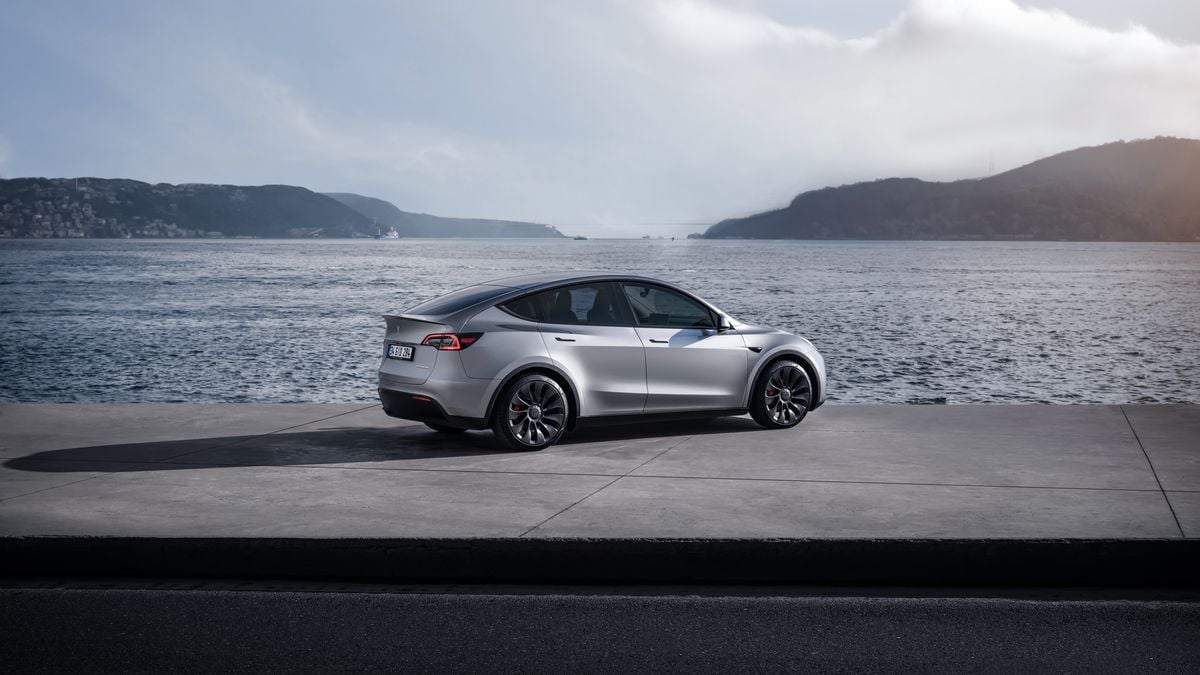
Suddenly, what felt like a science experiment became a seamless part of the driving experience. You start to relax. You start to trust. And that’s the tipping point where skepticism turns into belief.
FSD Real-World Endurance: 40,000-Mile Journeys & Neural Network Breakthroughs
It gets more impressive the longer you live with it. Redditor Lovevas logged over 40,000 miles on FSD, nearly 100% of their driving, and hasn’t had a single safety-related intervention in months. That’s not just an endorsement, that’s a data point. A powerful one. They write,
“Every time I show my FSD v13 to friends... It’s like finding a new world.”
And the pace of development? It’s something even Detroit’s sharpest engineers would grudgingly tip their hat to.
“The amount of progress FSD has made since the switch to an end-to-end neural network at the beginning of 2024 is astounding,”
The neural network shift, essentially teaching the car to see and respond like a driver instead of following pre-coded instructions, unleashed something new. This isn’t your 2019 Autopilot. It’s smarter, calmer, and as it turns out, a lot more capable than the meme-makers would have you believe.
Tesla Robotaxi Pilot Launch: Geofenced Austin Driverless Taxi & Regulatory Challenges
- Tesla plans to launch its first driverless taxi service, around 10–20 Model Y vehicles, in a geofenced zone in Austin starting June 22, 2025; they’ll be remotely monitored and limited to approved areas
- Videos shared online show a fully empty Model Y making turns through intersections with “Robotaxi” branding, likely accompanied by chase cars and test engineers
- Texas prohibits city-level AV regulations, but state oversight could intervene. The NHTSA has requested data from Tesla, and public safety advocates are voicing concerns given FSD’s track record
- Tesla hopes to expand from this pilot to thousands of self-driving taxis across other U.S. cities by late 2026, competing directly with firms like Waymo (which has been operating robotaxis in Austin)
What makes all this so fascinating isn’t just the tech, it’s the reaction it inspires. Across threads, replies, and reposts, one sentiment kept bubbling up: “I get it now.” That quiet moment of clarity when someone lets go of old assumptions and simply watches the machine work. That’s what Tesla’s FSD is doing.
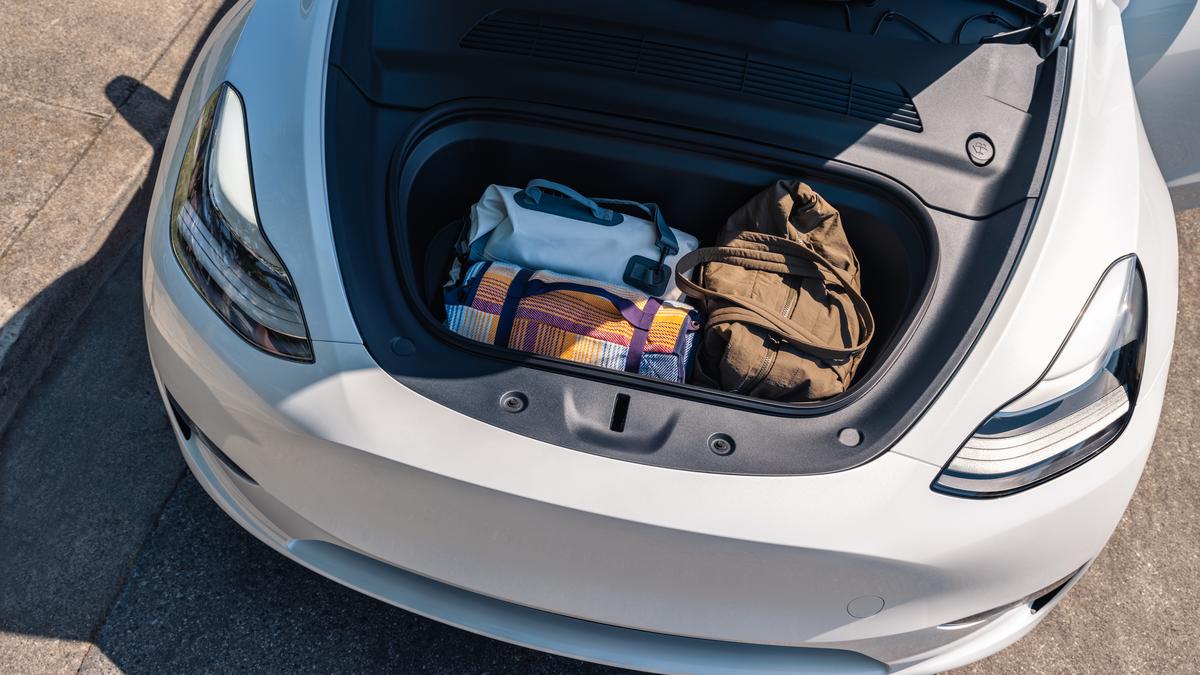
So no, this isn’t a eulogy for the joy of driving, nor is it a love letter to a single brand. But it is a note of recognition, of something truly significant happening in our time. FSD isn’t perfect. But it’s here, and it works well enough that people are reconsidering everything they thought they knew about automation, safety, and the future of getting from A to B.
Image Sources: Tesla Media Center
Noah Washington is an automotive journalist based in Atlanta, Georgia. He enjoys covering the latest news in the automotive industry and conducting reviews on the latest cars. He has been in the automotive industry since 15 years old and has been featured in prominent automotive news sites. You can reach him on X and LinkedIn for tips and to follow his automotive coverage.


